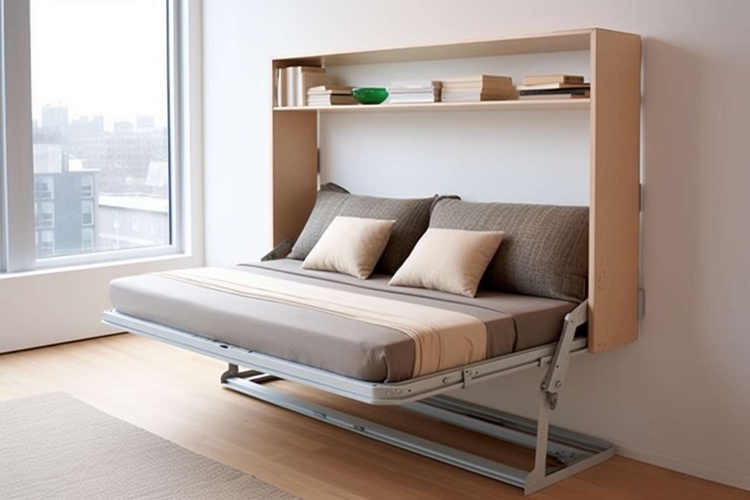The Enchanting World of Fractal Design in Home Decor
Imagine stepping into a living room where intricate, self-repeating patterns adorn the walls, furniture, and accessories. These mesmerizing designs, known as fractals, are not just visually stunning but also have a profound impact on our well-being. Welcome to the captivating realm of fractal design in home decor, where mathematics and aesthetics converge to create spaces that are both visually striking and psychologically soothing.

In the realm of art and design, fractal-like patterns have been utilized long before their mathematical properties were understood. Islamic geometric art, with its complex, repeating motifs, and Gothic architecture, featuring self-similar structures, are early examples of fractal-inspired design. However, it wasn’t until the advent of computer technology that the true potential of fractal design in home decor began to be realized.
The Psychology of Fractal Patterns
The appeal of fractal design goes beyond mere aesthetics. Research has shown that exposure to fractal patterns can have a significant positive impact on our mental state. Studies conducted by physicists and psychologists have found that viewing fractals with a specific range of complexity can reduce stress levels and promote a sense of calm.
This psychological effect is believed to be linked to our innate connection with nature. Our brains are wired to process the fractal patterns found in natural environments, and when we encounter similar patterns in our built environments, it can trigger a sense of familiarity and ease. This concept, known as biophilic design, is gaining traction in the world of interior design, with fractal patterns playing a key role.
Incorporating Fractals in Home Decor
The beauty of fractal design lies in its versatility. From subtle accents to bold statement pieces, there are countless ways to incorporate these mesmerizing patterns into your home. Here are some innovative approaches:
Wallpaper and Murals
One of the most impactful ways to introduce fractal design into your space is through wallpaper or murals. Digital printing technology has made it possible to create intricate, large-scale fractal patterns that can transform an entire room. These designs can range from nature-inspired motifs, like fern fronds or tree branches, to abstract mathematical fractals that create a sense of infinite depth.
Textiles and Soft Furnishings
Fractal-patterned textiles offer a more subtle way to incorporate this design trend. Throw pillows, curtains, and area rugs featuring fractal designs can add visual interest and complexity to a space without overwhelming it. The repetitive nature of these patterns can create a sense of rhythm and flow in a room, tying different elements together.
Lighting Fixtures
Lighting presents a unique opportunity to play with fractal design. Pendant lights and chandeliers inspired by natural fractal forms, such as coral or crystal structures, can become stunning focal points. When illuminated, these fixtures cast intricate shadows, adding an extra layer of visual interest to your space.
Furniture and Accessories
Fractal-inspired furniture pieces are emerging as statement items in contemporary interiors. From coffee tables with bases mimicking tree root systems to shelving units that echo the branching patterns of lightning, these pieces blur the line between functional furniture and art. Smaller accessories, like vases or sculptures featuring fractal designs, can serve as conversation starters and add depth to your decor.
The Future of Fractal Design in Homes
As our understanding of the psychological benefits of fractal patterns grows, we can expect to see an increased integration of these designs in residential spaces. Advancements in 3D printing and digital fabrication are opening up new possibilities for creating custom fractal elements in home decor.
Moreover, the principles of fractal design are beginning to influence architectural concepts. Imagine homes where the very structure of the building incorporates self-similar patterns, creating spaces that are not only visually captivating but also harmonious with our innate preferences for natural forms.
The intersection of fractal design with smart home technology also holds exciting potential. Interactive walls that can change their fractal patterns based on the time of day or the occupant’s mood are no longer the stuff of science fiction. As we continue to explore the possibilities of fractal design in our living spaces, we’re not just creating beautiful interiors – we’re crafting environments that resonate with our deepest connections to the natural world.
In conclusion, the enchanting world of fractal design offers a unique blend of aesthetic appeal and psychological benefit. By incorporating these mesmerizing patterns into our homes, we can create spaces that are not only visually striking but also conducive to our well-being. As this trend continues to evolve, it promises to transform the way we think about and interact with our living environments, ushering in a new era of thoughtful, nature-inspired design.




